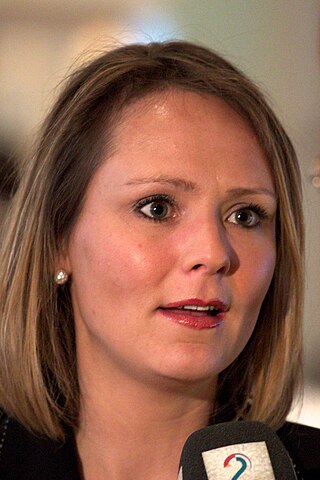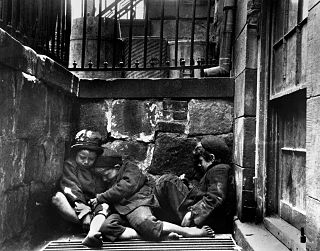National and international criticism

The Norwegian Child Welfare Services are periodically the subject of public criticism, generally on two main issues. On the one hand, they are criticised for detecting too few cases of parental neglect and helping children too late (i.e., for having a too high threshold for taking action). On the other hand, they are criticised for taking over custody too easily (i.e., for having a too low threshold for taking action). [20] [21] Taken together, the overall criticism is that the service is slow to take action but heavy handed when it does. [22] [23] [24] Due to their duty of confidentiality, the Norwegian Child Welfare Services themselves cannot participate in public debates of single cases.
The Norwegian Child Welfare Services are obliged to ensure the well-being of all children residing in Norway, irrespective of their (or their parents’) nationality. [25] While Norwegian legislation, following the United Nations Convention on the Rights of the Child, treats children as legal subjects in their own rights, some cultures regard children as the sole responsibility of the family. In several cases, therefore, culture clashes seem to exacerbate conflicts between the Child Welfare Services and immigrant parents. [26] [27] Children with a foreign mother are four times more likely than other children in Norway to be forcibly taken from their families and the number of children taken into emergency care rose by 50% in just 5 years (from 2008 to 2013) with the commonest reason for a care order now being simply "lack of parenting skills". [28]
The European Court of Human Rights (ECtHR) have by 2019 accepted twenty six separate hearings against Norway for the activity of its Child Welfare agency since December 2015. [29] The ECHR rendered a judgement in one of these cases on the 7th of September, 2017 with a judgement of "No violation of Article 8". [30] However, on the 10th of September 2019, the Grand Chamber found a violation of Article 8 (the right to respect for family life) on account of shortcomings in the decision-making process leading to the adoption of a boy who had been placed in foster care in the judgment of Strand Lobben and Others v. Norway. [31]
- Pavel Astakhov, former Russian children’s ombudsman, made the allegation that the Norwegian Child Welfare Services abducts children from Russia in order to solve "population problems", in what was characterised as propaganda and misinformation by editor in chief of the Barents Observer, Thomas Nilsen. [32]
- Approximately 4000 people who were formerly taken into custody by the child welfare have sought compensation for suffering and abuse while living in orphanages or foster families between 1945 and 1980. Of these, 2637 have received compensation, in total $220 million (2010). [33] [34]
- The services have been severely criticized by the Government of India for taking away two children from an Indian couple who were working in Norway. [35] The case involved Norway's foreign minister (Jonas Gahr Støre) meeting with a special envoy from India in 2012. [36] The father of the two children said to a local newspaper that The Norwegian Child Welfare Service had said the mother was force feeding the children. His point of view was that this was just "cultural difference" and that "it is not easy to understand Norwegian rules for a foreigner". [37] Berit Aarset, who heads Human Rights Alert, Norway, has called the incident "state kidnapping". She says, "This is not the first time such a thing is happening in Norway... the legal system favours the Child Welfare Services and they do what they want all the time... quite often when a Norwegian is married to a non-Norwegian they also do the same thing; they also do this to asylum seekers and in almost every case they say one of the parents has a mental problem just to make their case strong... that is what has happened in [this] case too." [38]
- In two widely publicized cases, the Polish private investigator Krzysztof Rutkowski has helped "kidnap" children (a Russian-born boy and a Polish girl) from Norwegian foster care in order to reunite them with their biological parents. [39] The boy tried to look for help via mail (although he had banned access) to the Russian authorities. He eventually fled from the substitute family with the help of Polish detective. In spite of the threat of prosecution, her mother returned to Norway for her younger son, so far however unsuccessfully. [40] Later Norwegian authorities’ claim for return of the girl has been declined by a Polish court as unjustified. [41] The girl has purportedly been manipulated to confirm that she was mistreated by her parents. [42]
- In May 2011, the two sons of a Czech family Michálák were removed by the Child Welfare Services due to the notifications from school nurses of child sexual abuse by the father; allegations denied by the couple and by the police officers. [43] Parents were exonerated, but although their children were taken only under interim measures, they were not returned. The mother, Eva Michaláková, who has since divorced her husband and continues to reside in Norway, has continued to pursue custody of her children through various channels, including the European Court of Human Rights, where her complaint was rejected without prejudice for non-exhaustion of domestic remedies. [44] The children were separated by social workers and assigned to Norwegian families. The Czech President, Miloš Zeman, compared the organization to the Nazi Lebensborn program, with the claim that the children's organization is raising young Norwegians and that they are so called "de-nationalized". [45] [46] In the Chamber of Deputies of the Parliament of the Czech Republic, and the foreign minister Lubomír Zaorálek has sent a diplomatic note to Oslo regarding the matter. [47] Several other Czech politicians also got involved in efforts to get the children back to their mother, including Jitka Chalánková (MP), [48] Tomáš Zdechovský (MEP) and Petr Mach (MEP). [49] In January 2015, the Norwegian Embassy in Prague published a press release "clarify[ing] some issues regarding the Norwegian child welfare system in the hope that this will help in understanding" this case. [50] However, the Norwegian Embassy soon removed the article, which can be access using wayback machine. The mother could see her sons twice a year for fifteen minutes. She has however lost her parental rights to both children in 2015, since then she has no right to see them at all. The organization justified its decision among other things by too high media coverage of the case and that the children became accustomed to the foster parents. Boys Denis and David Michalák were placed to different foster families, so they can not speak Czech anymore, they can not meet each other and are forced to forget their Czech background and roots. [51] [52] In January 2020 the Czech District Court in Hodonín formally commit to care both sons to mother although they are kept in hidden places in Norway and information about them are kept as a secret also for the Czech state. [53]
- In November 2015, a Romanian-Norwegian couple of Pentecostal faith were accused of using physical discipline against their children, and all five children were removed from their custody. [54] In June 2016, the municipality came to terms with the parents, [55] and the children were re-united with their parents. [56] All five children have been returned to their family after a settlement was reached, a county board hinting they will rule against the agency. [57] [ better source needed ]
- A Romanian family's two children were removed in October 2015. Their daughter was filmed while playing and said she has been slapped by her parents. After one year, the Nord-Troms District Court ruled against the agency and decided to return the children to their family. [58]
- In 2016, a Norwegian family's twin daughters were removed shortly after birth due to the mother’s alleged “undetermined mental disability” supposedly diagnosed 11 years earlier when she was 13 years old. The family took Norwegian Child Welfare Services to court, after 7 months eventually they were granted timely care over their biological daughters. Fearing that their daughters may be taken away once again, they fled to Poland and settled in the city of Katowice. On behalf of Norway, they were sought by Interpol as fugitives who kidnapped their own children. [59] In January 2017, the news reached them that the mother was pronounced fully sane, and that they won full custody over their children, however in the end they decided to stay in Poland. [60]
- In May 2017, a Norwegian woman named Silje Garmo fled to Poland with her 1-year-old daughter Eira; the woman claimed she feared the baby would be taken away by Norwegian social services on inflated charges of overusing painkillers and chronic fatigue. Garmo asked for asylum in Poland and was later aided juridically by the Polish Catholic lawyers’ association Ordo Iuris. [61] According to the media, in mid-December 2018 the Polish Ministry of Foreign Affairs withdrew their initial objections and consented to Garmo's request. [62] If confirmed, Garmo would be the first Norwegian citizen accepted as refugee in Europe since the Second World War. [63] Silje Garmo obtained asylum protection in Poland. [64]
- Polish consul Sławomir Kowalski was expelled from Norway after allegedly having acted in a threatening manner towards employees of the Norwegian Child Welfare Services. [65] [66]
On 1 July 2021, in three more cases, Norway was convicted in ECtHR. Two of the cases dealt with limited visitation while child was placed with foster parents - and in one of those cases, the mother was only permitted to see her child, four times per year; the third case dealt with a forced adoption. [67]




